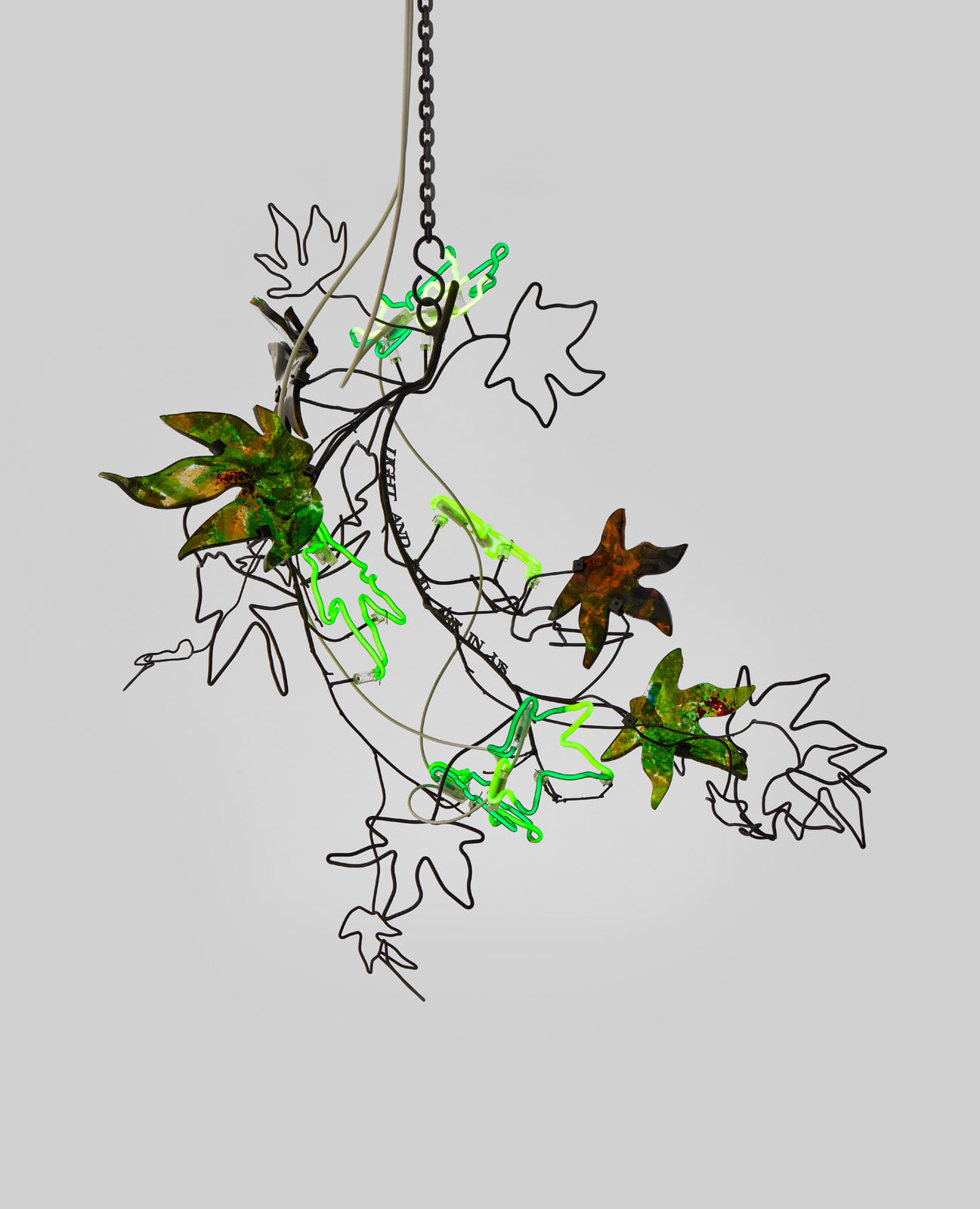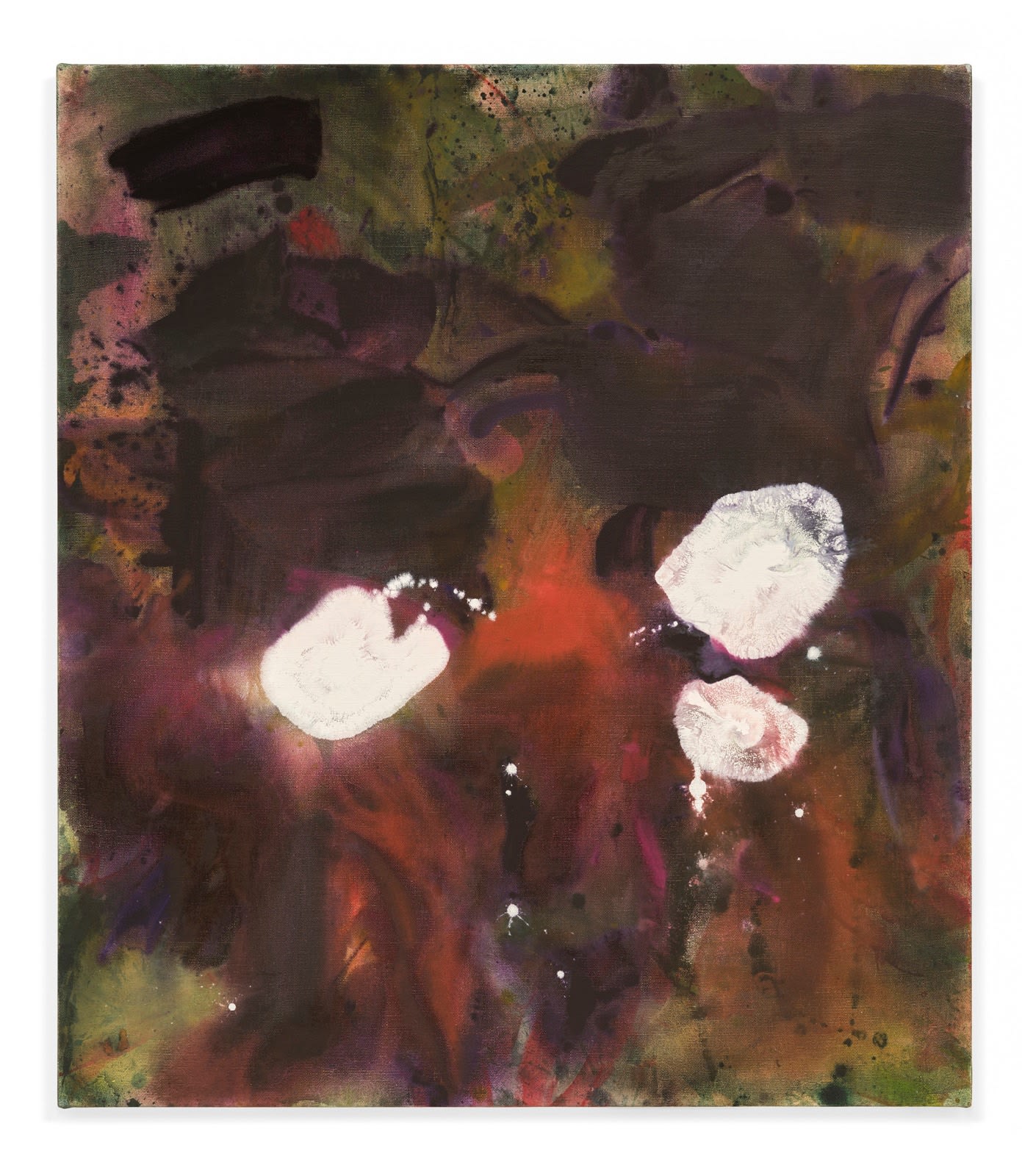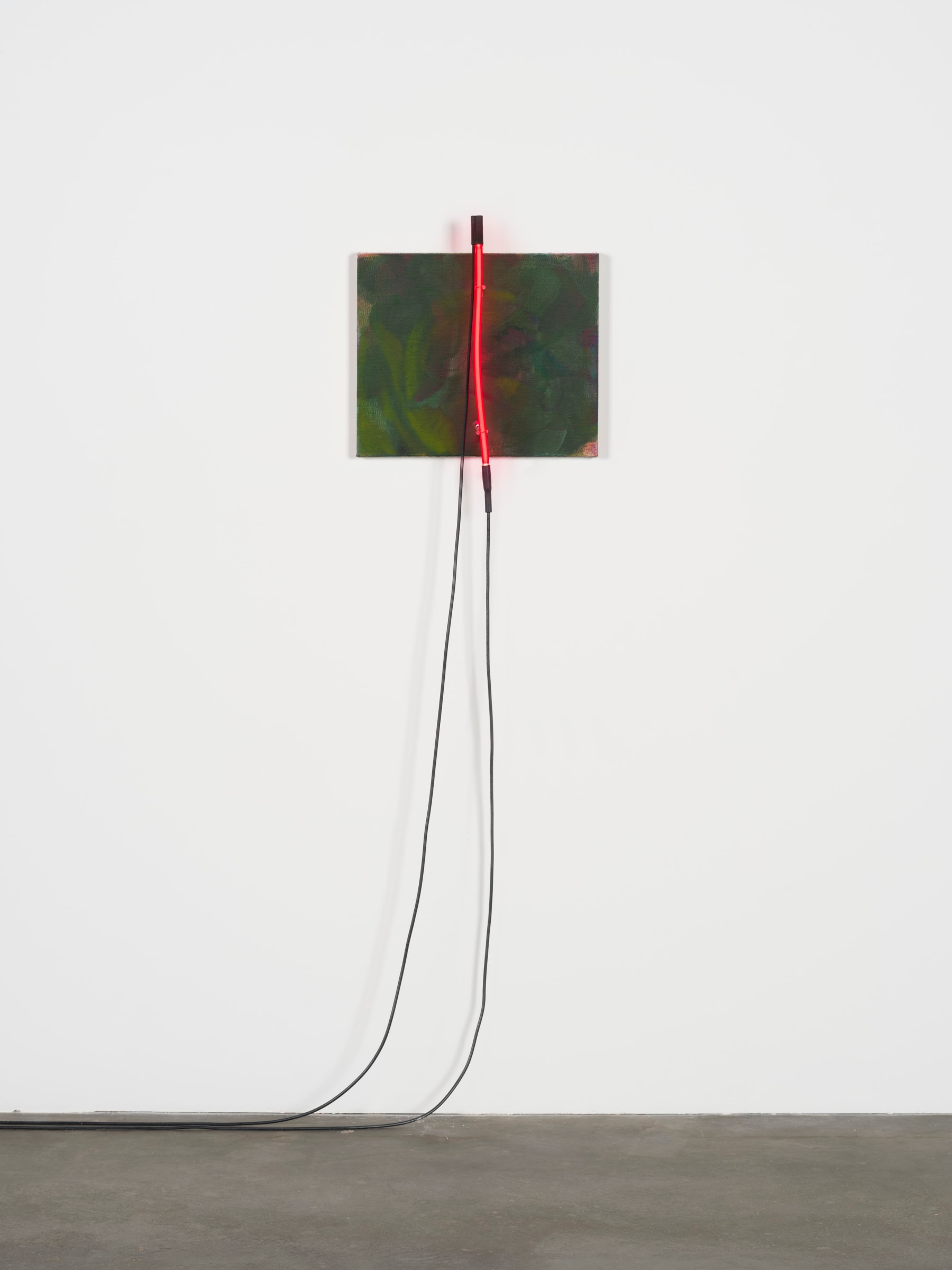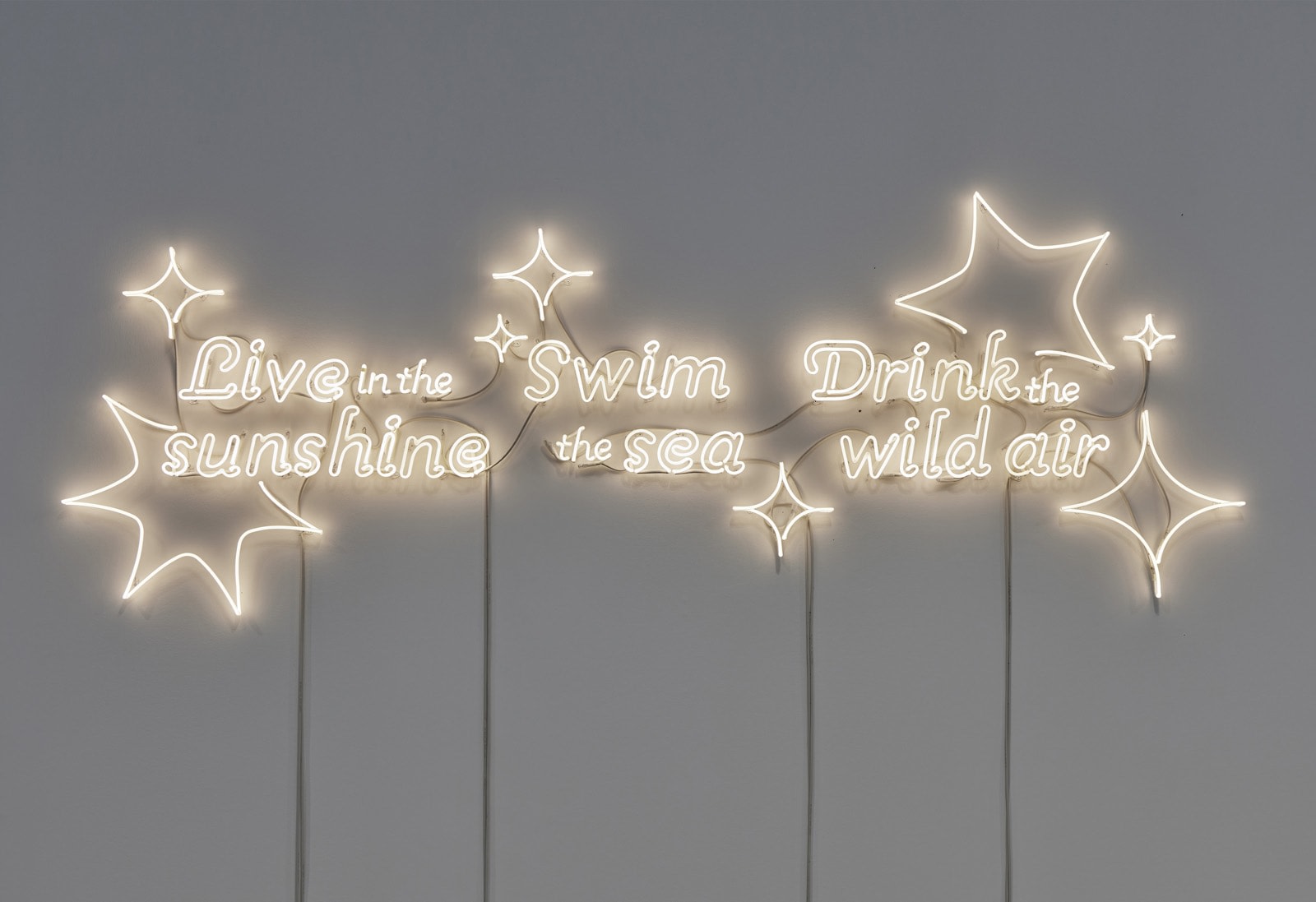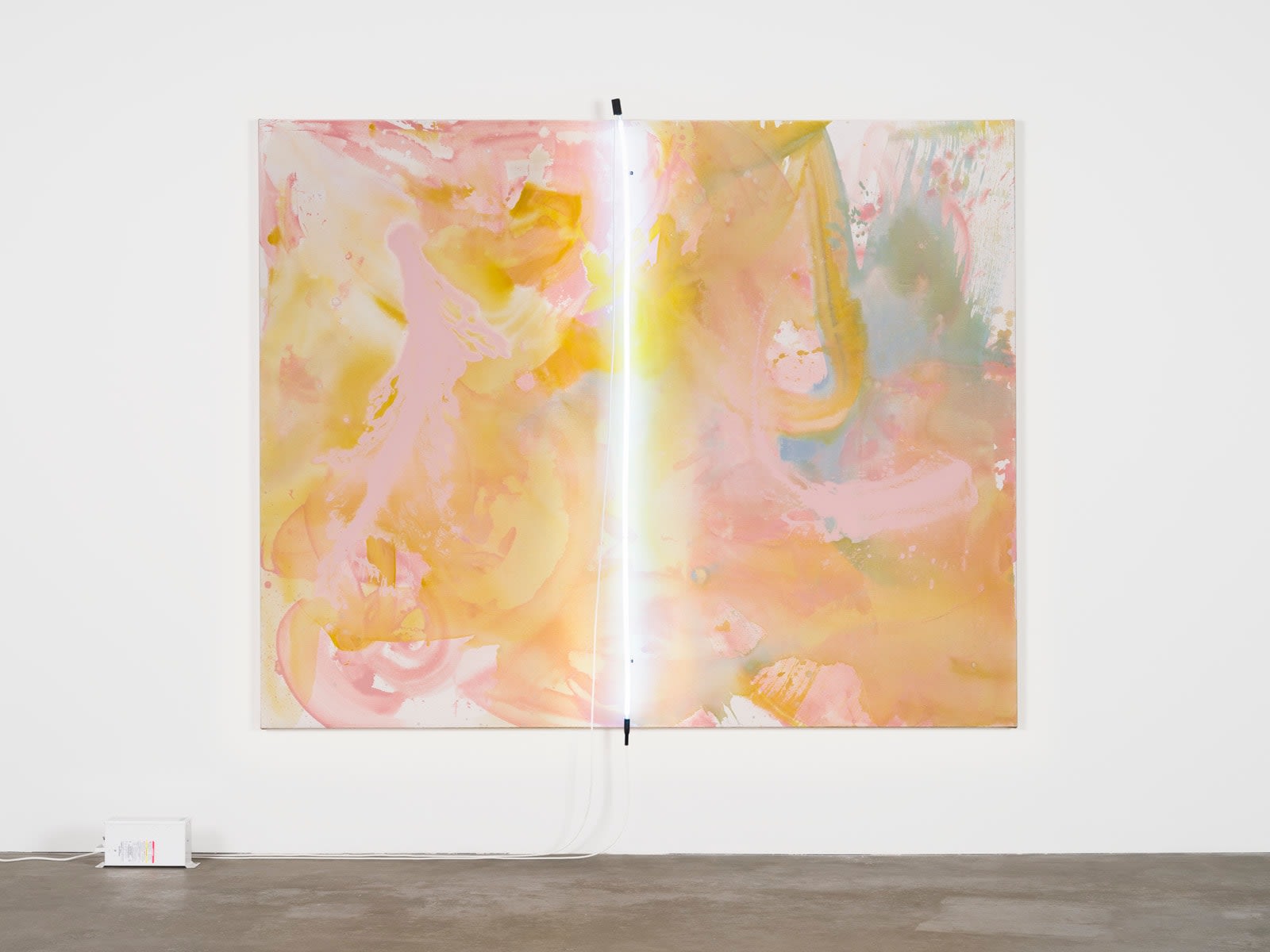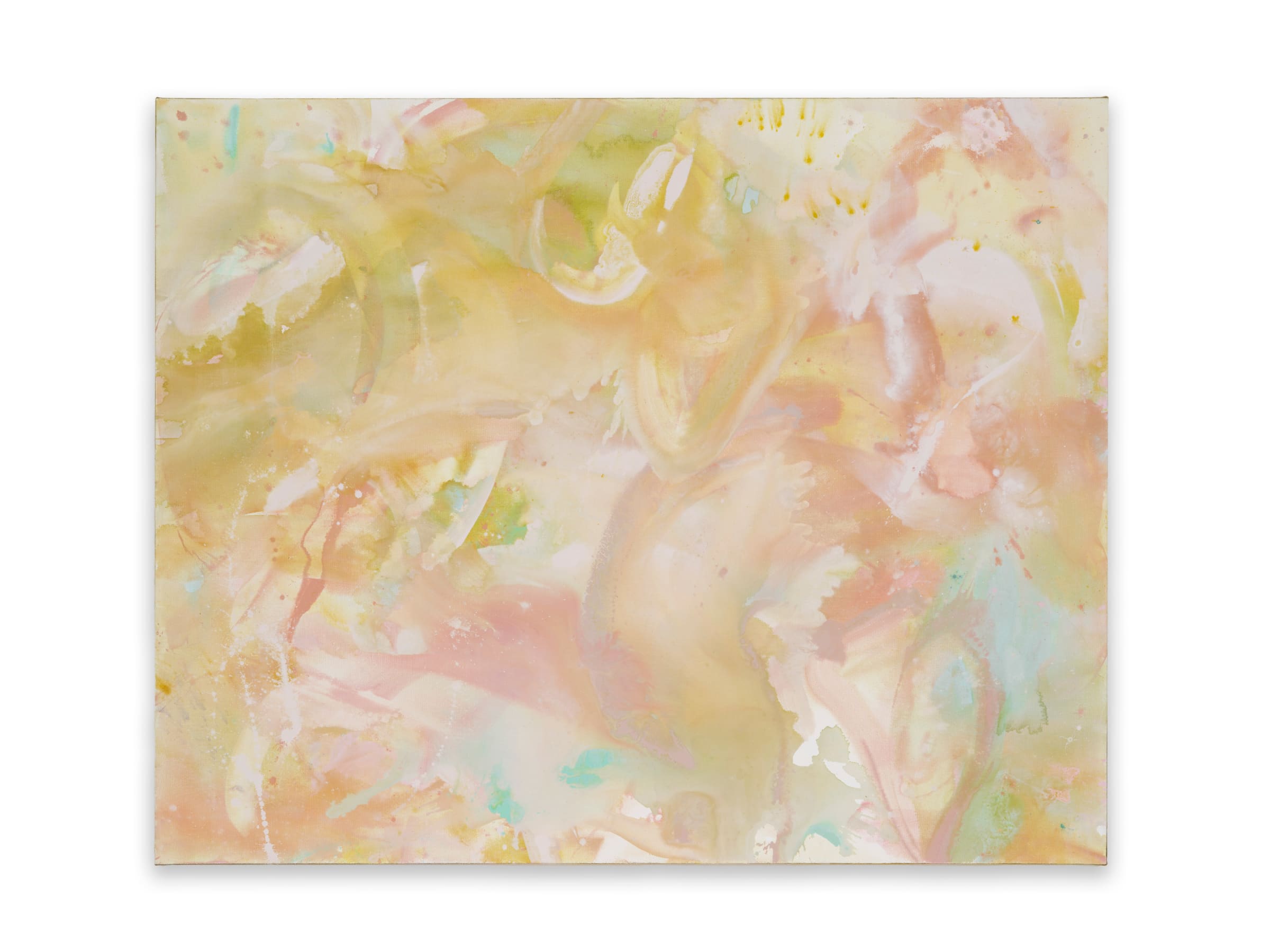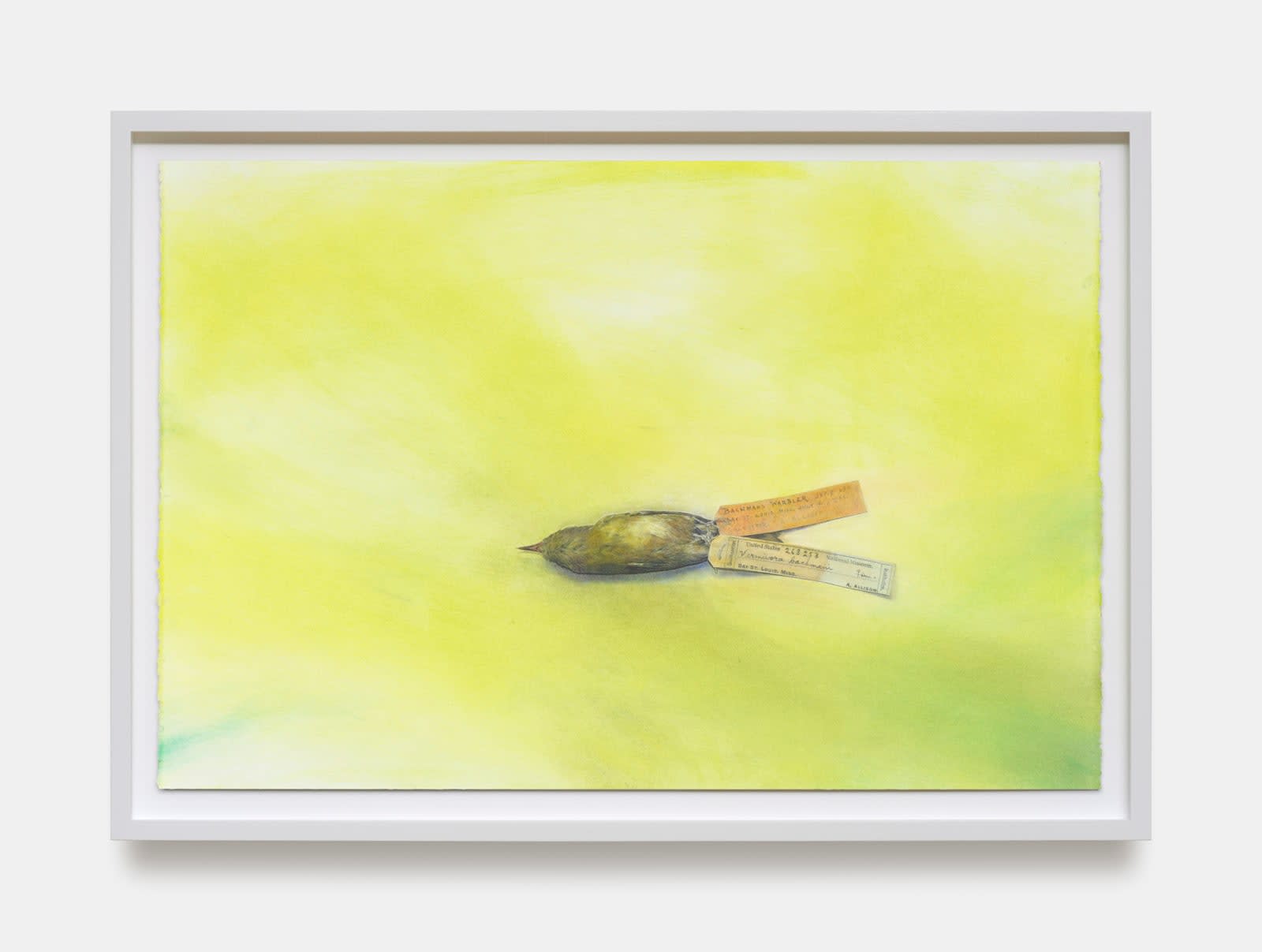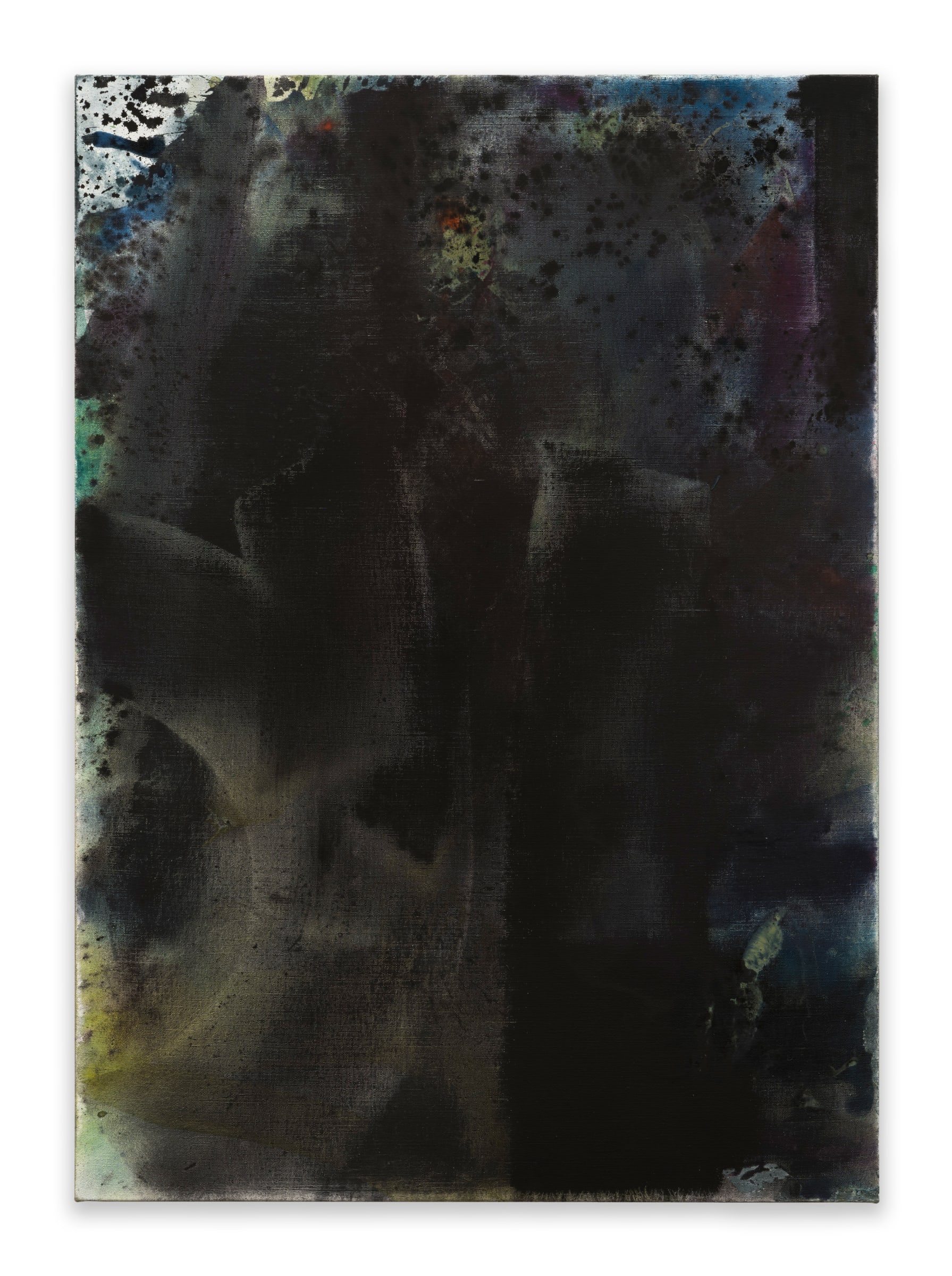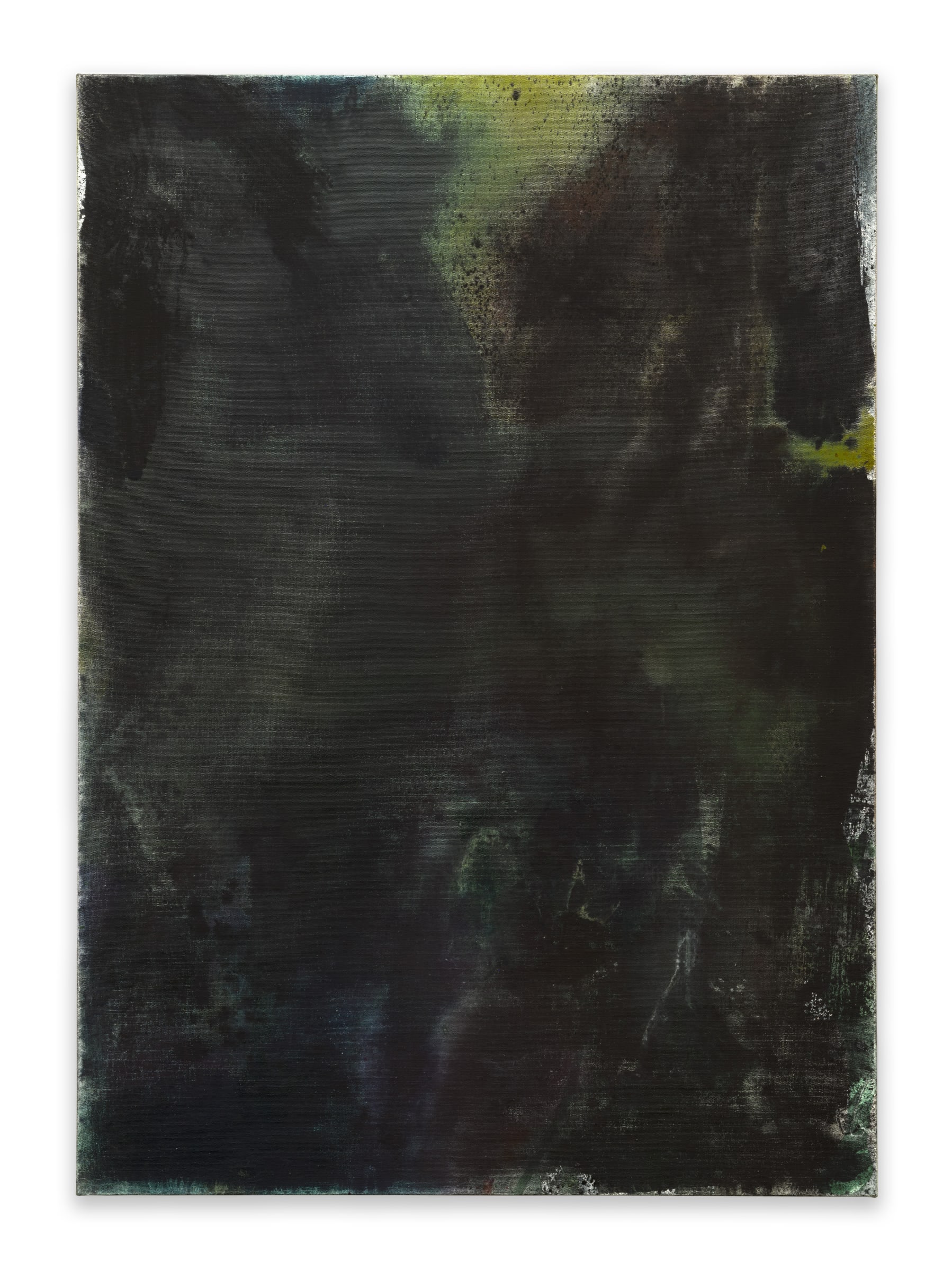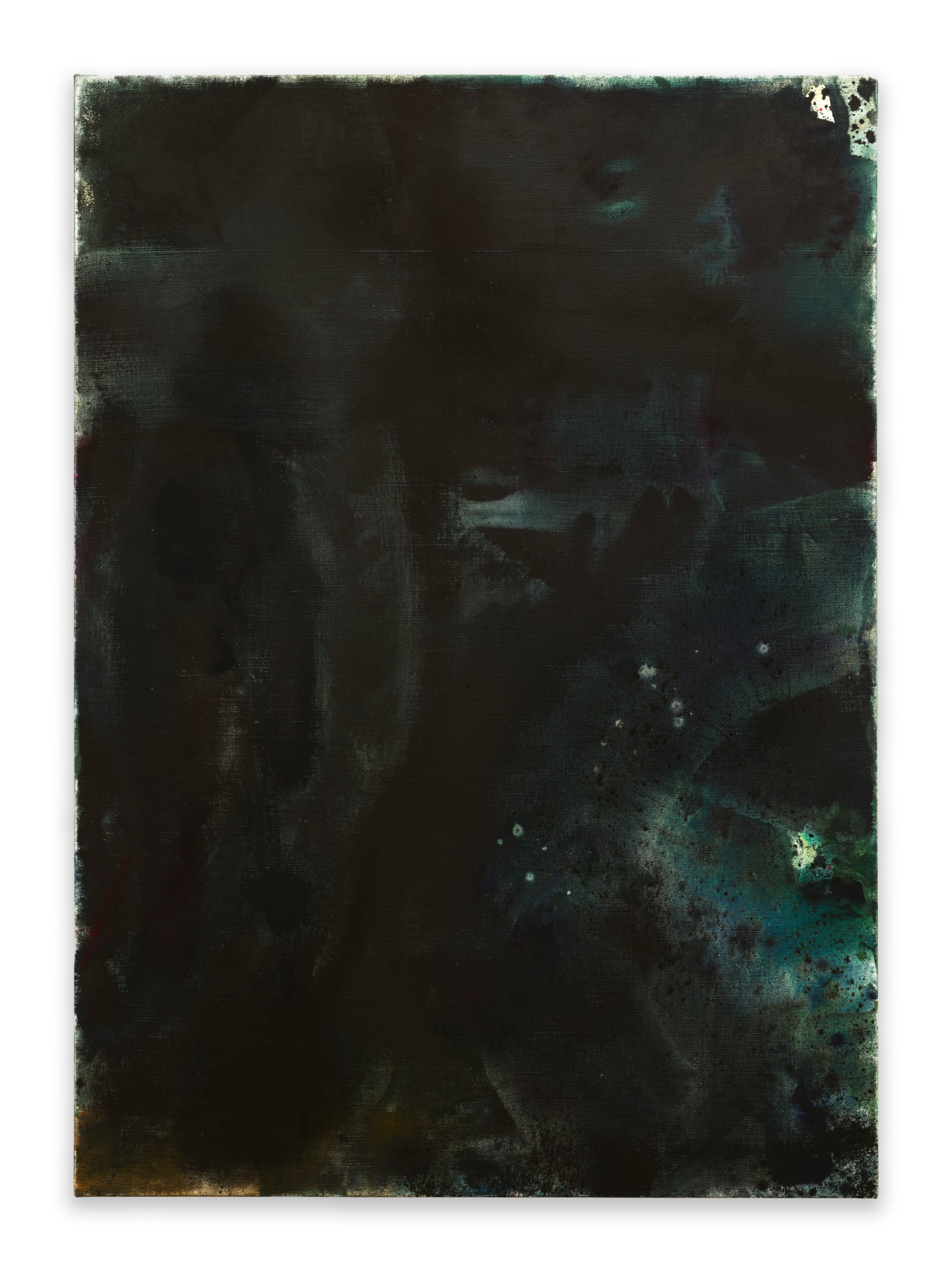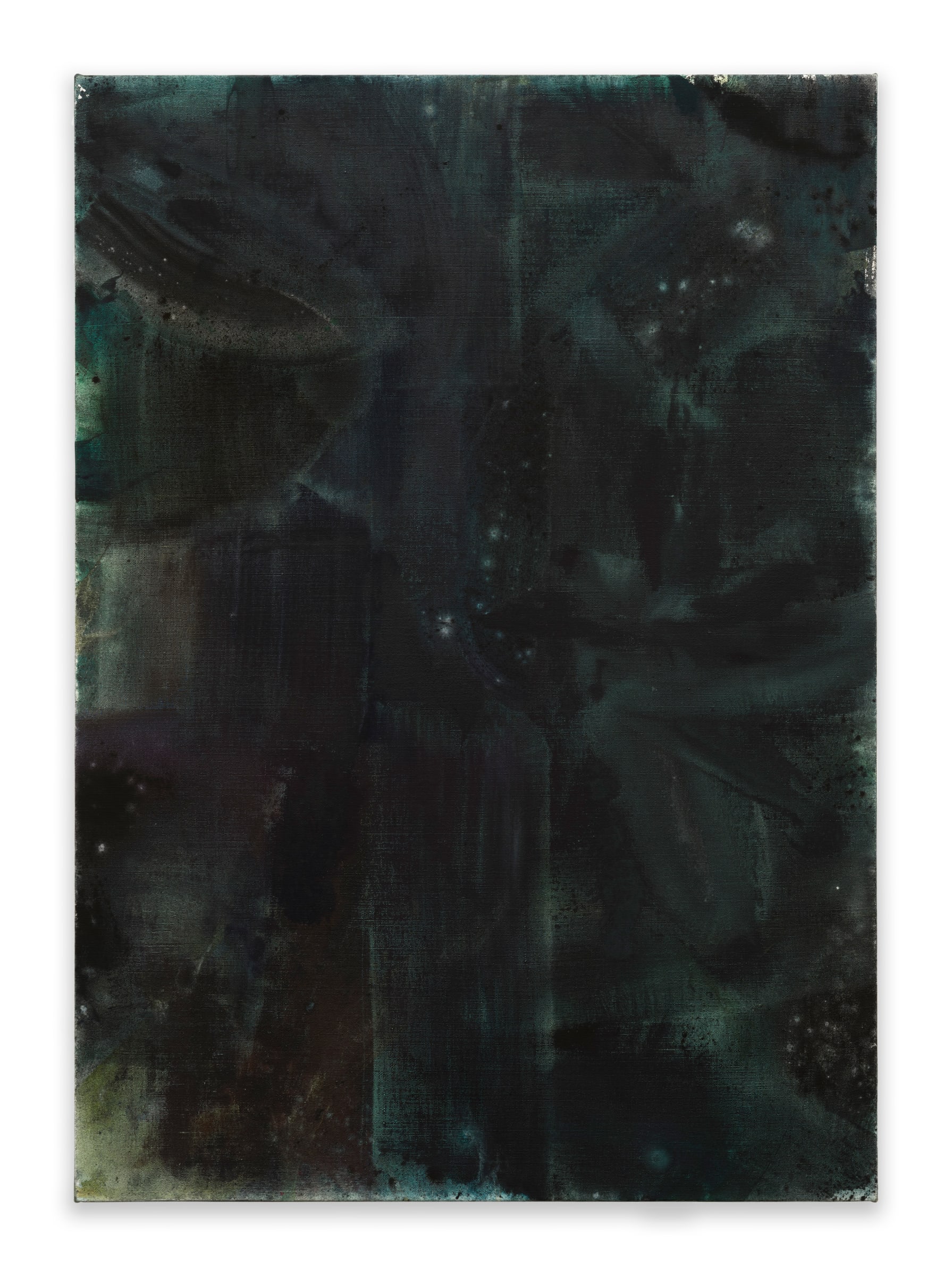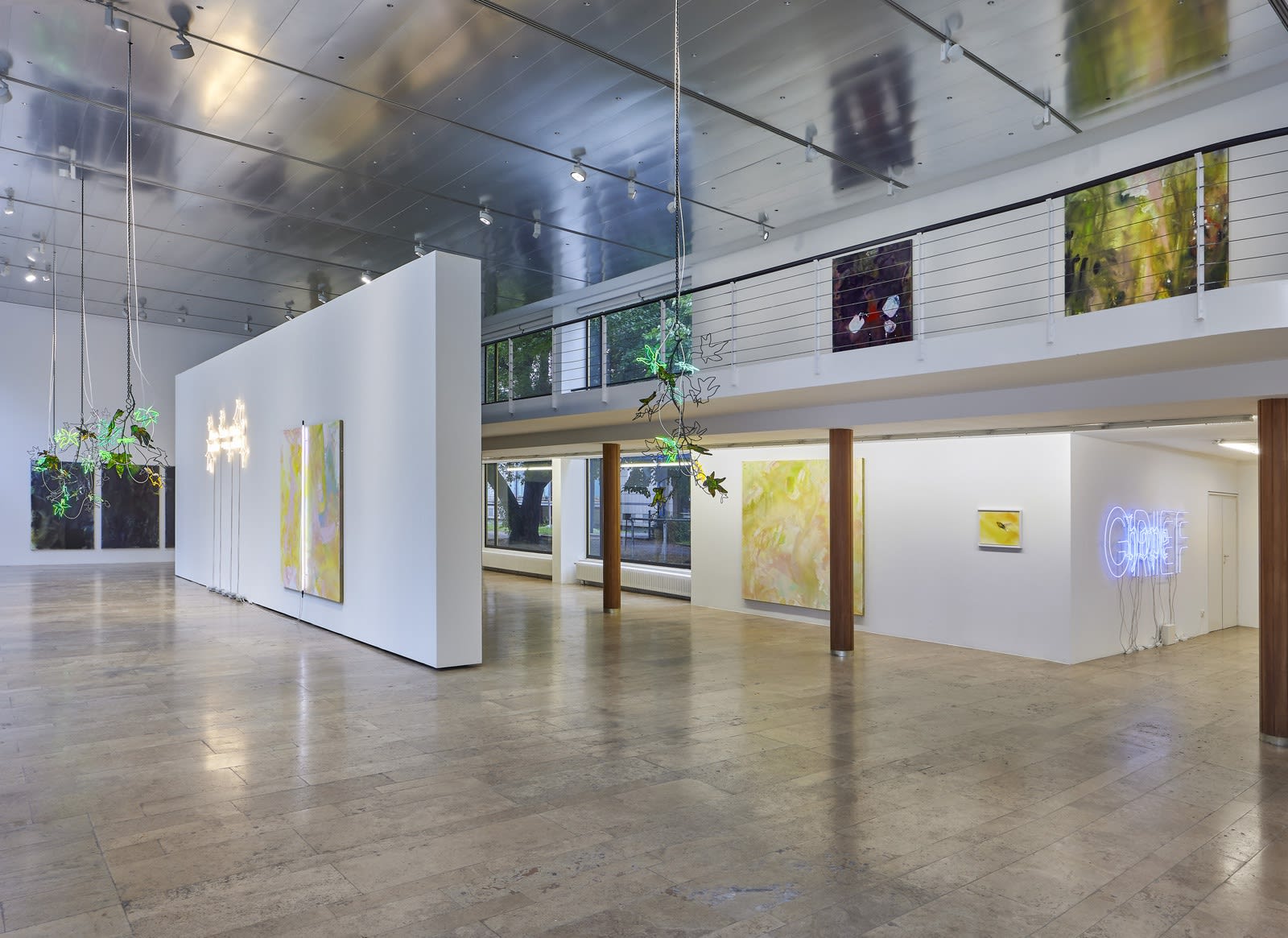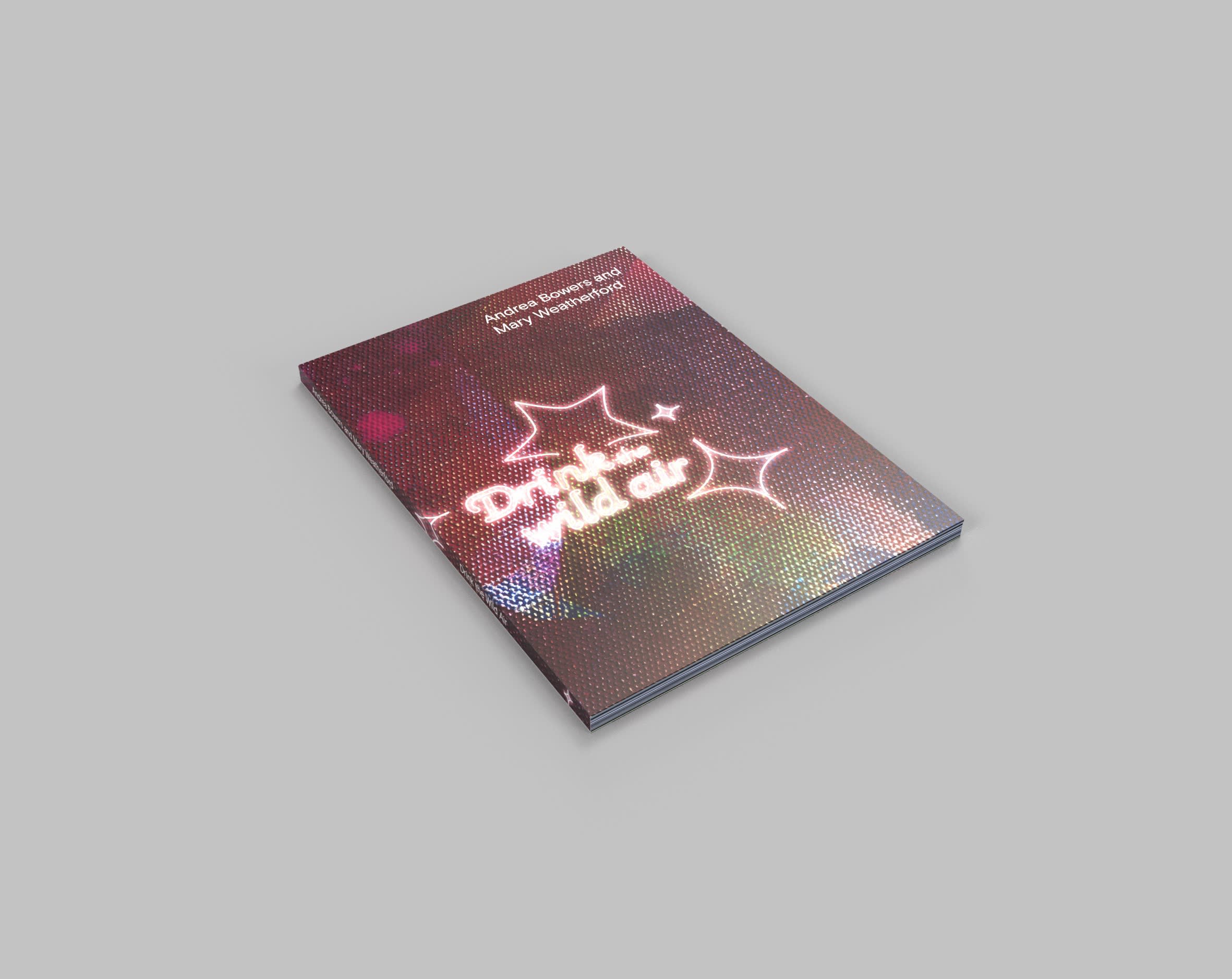Andrea Bowers and Mary Weatherford: Drink the Wild Air
-
Overview
Mary Weatherford and Andrea Bowers have often talked about making a show together. Bowers suggested that she would make neons while Weatherford would make paintings, a serious joke that neither would strictly hold the other to but subsequently formed the foundation for their two-person show, Drink the Wild Air, at Capitain Petzel. For Bowers, Weatherford is part of her "Beloved Community", a quote from MLK containing two simple words that embrace the basic human necessity for democracy and love.
Mary and Andrea met in NYC around 1988 where the two were working in galleries in Soho. Mary attended the Whitney ISP in 1985 and Bowers began graduate studies at CalArts in 1990. Perhaps both young artists internalized the benefits and disfunction of the anvil of pedagogical theory dropped on them. Creativity was not a topical issue. The zeitgeist was critical analysis. Mary's response was to move in a direction that was more personally freeing by committing to a body of work 100 percent based on her own stories. While at CalArts, Bowers was told to stop drawing and focus on content. She found her voice in the histories of community organizing and nonviolent civil disobedience and committed to using aesthetics in service of social justice.
Both practices are part of the tradition of women's storytelling. While Bowers bears witness to the narratives of activists and political movements, Weatherford focuses on autobiography. In the way that women historically hid familial histories and recipes for holistic medicines in unexpected places like children's stories and folklore, Weatherford's stories are clandestine, hidden in liquid paint. Weatherford's secret narratives simmer beneath the surface while Bowers insists on clarity toward action and citizenry. Both positions are viable and crucial. In a matriarchal model of community, responsibility and care, two seemingly oppositional approaches can flourish simultaneously.
Bowers is including three neon text works in the exhibition. The first, Grief Hope, was originally made for the Abteiberg Museum but its acute content has thematically driven her selection of works for this exhibition. For Bowers this slogan is derived from the term, Eco-grief, the sense of loss that arises from experiencing or learning about environmental destruction and climate change. In this grouping of works hope resides in the consciousness raising that results from allowing ourselves to feel grief. From Bowers's physiological political mantra to Weatherford's ruminations on grace and darkness, both artists focus on the trans-corporeal experience, meaning the human is always intermeshed with the more-than-human world.
Not quite a landscape painter, more a painter of experiences, Weatherford introduces two new bodies of work, based on her observations of the natural world, that illuminate her encounters with dawn and the light in night and shade. Weatherford reflects on the ways that nature conceals and reveals itself in her immediate surroundings. Including neon only sporadically, this body of work focuses closely on subtle palettes drawn from vastly different environments and times of day, capturing fleeting and specific moments of natural light. These paintings are about possibility and transformation, yet quietly tragic. As Weatherford explains, "There is something sad about the luminosity in the sublime. Like grabbing smoke, you can't hold on to it."
The pastel-colored paintings, Venice Dawn and Venice Dawn White Light, are an experience of the Venice lagoon when the water and sky became the same pink hue for only an instant. The dark green paintings attempt to document moonlight in darkness, or the infinitesimal sunlight that filters into the deep forest. The Night Blooms paintings are an encounter on a night-time walk through a tropical garden finding white orchids, growing on a tree, shining in the darkness. Forest Gate, a constellation of dark green paintings the approximate size of doors, are portals to deep forests so lush, light barely breaches the canopy. The luminosity of light emanating from the canvas is how she locates the beauty in her painting.
Bowers's second sign, made with super femme font and incandescent pink neon, is a quote from Ralph Waldo Emerson, "Live in the sunshine, swim the sea, drink the wild air". She chose this quote for its personal and political appeal. Personally, a loving description of Weatherford, who is at home in both the land and the sea, as well as a hopeful political call to action, reminding humans of our interconnectedness with Mother Earth. Weatherford finds comradery with the American Transcendentalist belief in the divinity of nature and privileging of woods over books. Weatherford comments, "A long time ago I traded in criticality for authorship. I (try to) translate my experiences, real and imagined, into paintings." For Bowers, divinity in nature is political and feminist.
With Weatherford's paintings as a companion, Bowers produced a new grouping of her Chandeliers of Interconnectedness. Based on actual sycamore branches, Bowers has created 5 hanging sculptures made of welded, recycled steel with representations of leaves fabricated in steel rods, non-toxic neon and now recycled glass, a collaboration with Judson Studios, the oldest family-run stained glass company in America. Words wind down a branch in each chandelier using lines of poetry and prose by the playwright and radical feminist philosopher, Susan Griffin whose words have been moving us with her celebration of the survival of woman and nature since 1978.
Continuing her practice of making memorials of loss, Bowers has meticulously created 2 new works on paper from the series, The Dead Silence of Extinction. These are highly realist drawings of tagged, taxidermied birds that have been recently declared extinct. Weatherford, who sometimes finds an image in the paint, provides the phoenix of the show; The Hummingbird gracefully whirs between the hidden and the revealed. Finally, Bowers sneaks in a new collaged cardboard work, one in a series of joyful meanderings on the artist's continued interest in eco-feminism, queer ecology and magical fiction. The image depicts a fem-fae figure at the scale of a hummingbird leaping through a giant mound of blooming, native California plants and flowers.
Written by Andrea Bowers
Andrea Bowers has been the subject of solo exhibitions at Museum of Contemporary Art Cleveland (2024); Galleria d’Arte Moderna Milano in collaboration with Fondazione Furla, Milan (2022); The Hammer Museum, Los Angeles (2022); Museum of Contemporary Art Chicago (2021/2022); Museum Abteiberg, Mönchengladbach (2020); Weserburg Museum für moderne Kunst, Bremen (2019/2020); Contemporary Arts Center, Cincinnati (2017); Espace Culturel Louis Vuitton, Paris (2014); Wiener Secession, Vienna (2007); and The Power Plant, Toronto (2007). Bowers has exhibited internationally in biennials and major institutional group exhibitions, including Kunstmuseum Bonn (2023); Hayward Gallery, London (2023); Kunstmueum Ravensburg (2023); Kuntsmuseum Wolfsburg (2022); Carnegie Museum of Art, Pittsburgh (2022); Berkeley Art Museum (2021); Institute of Contemporary Art, Los Angeles (2021); Museum Kunstpalast, Düsseldorf (2020); Schirn Kunsthalle, Frankfurt (2018); Documenta 14, Fridericianum, Kassel (2017); Triennale Milano, Milan (2017); Aspen Art Museum (2016); and Albertina, Vienna (2015). Bowers’ work is held in the collections of The Hammer Museum, Los Angeles; MoMA, New York; Whitney Museum of American Art, New York; Hirshhorn Museum and Sculpture Garden, Washington, DC; The Museum of Contemporary Art, Los Angeles, Museum Of Contemporary Art, Chicago, among others.
Mary Weatherford has exhibited extensively worldwide, with solo exhibitions at Museo di Palazzo Grimani (2022); SITE Santa Fe (2021); The Frances Young Tang Teaching Museum and Art Gallery at Skidmore College (2021); Aspen Art Museum (2021); Marian Miner Cook Athenaeum, Claremont McKenna College, Claremont, California (2014); Todd Madigan Gallery, California State University at Bakersfield, California (2012); and LAXART, Los Angeles (2012). She has been included in numerous survey and biennial exhibitions, including The Forever Now: Contemporary Painting in an Atemporal World, Museum of Modern Art, New York (2014).
Weatherford earned a B.A. from Princeton University, was a Helena Rubinstein Fellow of the Whitney Independent Study Program, and received an M.F.A. from the Milton Avery School of Fine Arts at Bard College.
-
Installation Views
-
-
-
 Andrea BowersChandeliers of Interconnectedness (We Are Made From This Earth She Said, Quote by Susan Griffin), 2023Steel, neon and fused glass116 x 96 x 56 cm
Andrea BowersChandeliers of Interconnectedness (We Are Made From This Earth She Said, Quote by Susan Griffin), 2023Steel, neon and fused glass116 x 96 x 56 cm
45.7 x 37.8 x 22 inches -
 Andrea BowersChandeliers of Interconnectedness (Light And Soil Are In Us, Quote by Susan Griffin), 2023Steel, neon and fused glass106 x 128 x 74 cm
Andrea BowersChandeliers of Interconnectedness (Light And Soil Are In Us, Quote by Susan Griffin), 2023Steel, neon and fused glass106 x 128 x 74 cm
41.7 x 50.4 x 29.1 inches
-
-
-
Works

-
-

-

-
What is striking about Mary Weatherford’s paintings is not only the atmospheric beauty that emanates from them, but how they conjure a narrative using the language of pure abstraction.
– Laura Hoptman, Executive Director, The Drawing Center, New York
-
-
-

-
Andrea Bowers‘ journey is a personal one: How a woman born in 1965, on the launchpad of Generation X, and raised in small-town Ohio, has navigated three decades of allyship to become, arguably, America’s most important political artist.
– Siddhartha Mitter, The New York Times
-

Andrea Bowers
Live in the Sunshine, Swim the Sea, Drink the Wild Air (Quote by Ralph Waldo Emerson), 2023Neon
113 x 304 x 5.5 cm
44.5 x 119.7 x 2.2 inches
Edition of 3 + 1 AP -
-

Andrea Bowers
Grief Hope, 2020Neon, transformers and power supply
124.1 x 304 x 10.2 cm
48.9 x 119.3 x 4 inches
Edition of 3 + 1 AP -
-
 Andrea BowersThe Dead Silence of Extinction (Bachman's Warbler, last confirmed sighting 1988, LA, scientific specimen preserved at Smithsonian National Museum of Natural History), 2023Graphite and soft pastel on paperPaper dimensions:
Andrea BowersThe Dead Silence of Extinction (Bachman's Warbler, last confirmed sighting 1988, LA, scientific specimen preserved at Smithsonian National Museum of Natural History), 2023Graphite and soft pastel on paperPaper dimensions:
38.1 x 56.9 cm / 15 x 22.4 inches
Framed dimensions:
44.2 x 62.9 cm / 17.4 x 24.8 inches -
 Andrea BowersThe Dead Silence of Extinction (Maui Akepa, last confirmed sighting 1988, HI, scientific specimen preserved at Naturalis Biodiversity Center), 2023Graphite and soft pastel on paperPaper dimensions:
Andrea BowersThe Dead Silence of Extinction (Maui Akepa, last confirmed sighting 1988, HI, scientific specimen preserved at Naturalis Biodiversity Center), 2023Graphite and soft pastel on paperPaper dimensions:
38.1 x 56.9 cm / 15 x 22.4 inches
Framed dimensions:
44.2 x 62.9 cm / 17.4 x 24.8 inches
-
-
-
-
-

-

-

-
Related Artists
-
Press
-
Publications
-
Video



